Air quality is an unseen risk.
With Americans spending 90% of their time indoors Air Quality is a pressing matter that is often ignored. Indoor Air Quality (IAQ) is a major factor that affects the health, comfort and productivity of a building’s occupants.
In fact the American Medical Association estimates that 50% of all illnesses are caused by polluted indoor air. In many buildings contaminants such as bacteria, mold, fungi and assorted spores are quite prevalent. A major source or method of distribution of these contaminants is a building’s HVAC system.

Nimbus 9’s air quality sensors report on pollutant levels and other air conditions inside your building in real time.
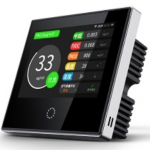
WALL MOUNT SENSOR
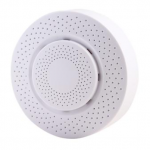
CEILING MOUNT SENSOR
Nimbus 9’s cost effective multi-measure sensors are designed to monitor environmental conditions in real-time. Sensors can be tied to Sirens and Alarms, send texts or emails when acceptable thresholds are exceeded and more. Nimbus 9’s sensor continuously monitor seven of the most critical environmental conditions which include:

VOLATILE ORGANIC COMPOUNDS
Volatile organic compounds (VOCs) are emitted as gases from certain solids or liquids. Common VOCs are formaldehyde, toluene, acetone, ethanol, 2-propanol and more. Short term effects of VOC exposure include nausea, fatigue, loss of coordination and dizziness while long term exposure can result in damage to the liver, kidneys and central nervous system.
Detection Range: 0 – 5500 ppb
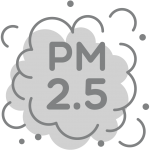
PARTICULATE MATTER 2.5
PM2.5 are fine, inhalable particles with diameters that are generally 2.5 micrometers and smaller. The average human hair is about 70 micrometers in diameter – making it 30 times larger than the largest fine particle. PM2.5 particles can get deep into lungs and some may even get into the bloodstream. Exposure to PM2.5 particles can lead to increased hospital admissions for heart or lung causes, acute and chronic bronchitis, asthma attacks, emergency room visits, respiratory symptoms, and restricted activity days.
Detection Range: 0 – 1000μg/m3
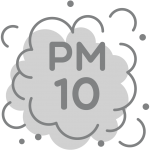
PARTICULATE MATTER 10
PM10 describes inhalable particles, with diameters that are generally 10 micrometers and smaller. Short-term exposure to PM10 has been associated primarily with worsening of respiratory diseases, including asthma and chronic obstructive pulmonary disease (COPD), leading to hospitalization and emergency department visits.
Detection Range: 0 – 1000μg/m3

CARBON DIOXIDE
At room temperature carbon dioxide is a colorless, odorless, faintly acidic-tasting, non-flammable gas. Carbon dioxide at levels that are unusually high indoors may cause occupants to grow drowsy, to get headaches, or to function at lower activity levels. CO2 leaks from cylinders and bulk storage tanks can result in oxygen deprivation and death. The maximum indoor CO2 level considered acceptable is 1000 ppm.
Detection Range: 400 – 5000 ppm
OXYGEN
Oxygen is the only component of the air we breathe capable of supporting life. Air is composed of approximately 21% oxygen, 78% nitrogen and other trace components. Effects of exposure to low oxygen concentrations can include giddiness, mental confusion, loss of judgment, loss of coordination, weakness, nausea, fainting, loss of consciousness and death.
Detection Range: 1% – 100%

HUMIDITY
The recommended average relative humidity for indoors is 30 to 50%, when the outside temperature is 20°F or more. Indoor relative humidity above 60% creates an ideal environment for mold and mildew. These contaminants pose a threat to the health of building occupants and cost as well as time consuming remediation for building owners.
Detection Range: 30% to 85% non-condensing. RH +/-5%
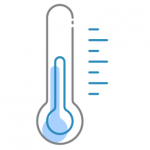
TEMPERATURE
Measuring and controlling of temperature is critical. It has been demonstrated that the comfort level of air temperature has measurable impacts on heart rate, respiration, exhaled carbon dioxide concentrations, and mood and sick building syndrome symptoms, as well as work performance.
Detection Range: -35°C to 65°C (32°F to 113°F)